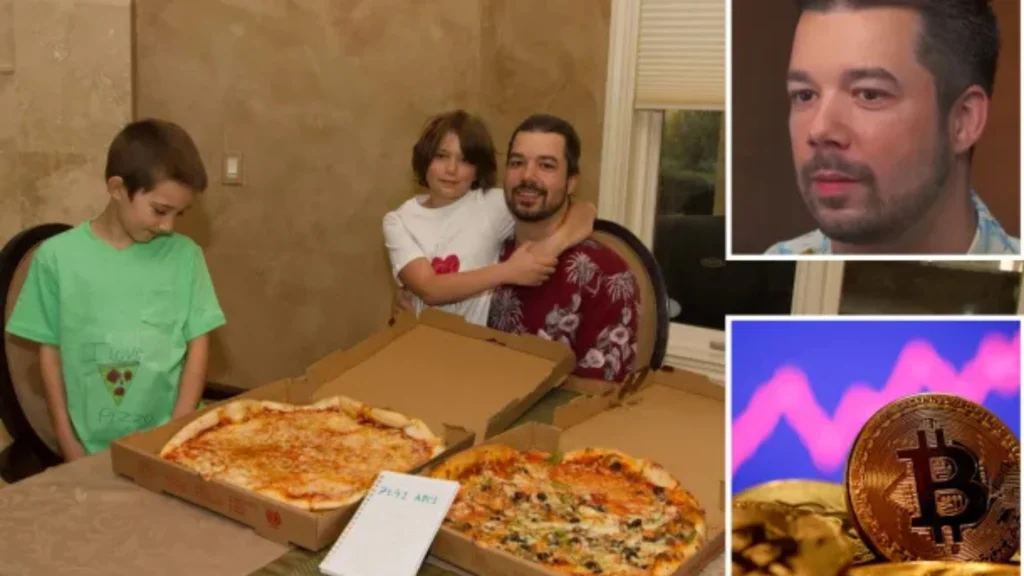
On May 17, 2010, a programmer named Laszlo Hanyecz made a strange post on a forum called Bitcoin Talk. He wrote, “I’ll pay 10,000 bitcoins for a couple of pizzas… like maybe 2 large ones so I have some left over for the next day. I like having leftover pizza to nibble on later.” At the time, hardly anyone knew what Bitcoin was, let alone used it to buy something.
Laszlo wasn’t joking. Just five days later, on May 22, someone named Jeremy “jercos” Sturdivant replied to the post. He accepted the offer. Jeremy ordered two large Papa John’s pizzas and had them delivered to Laszlo in Florida. In return, Laszlo sent him 10,000 BTC, worth about $41 back then.
The First Real-World Bitcoin Purchase
This pizza purchase wasn’t just lunch — it was history in the making. It became the first documented real-world transaction using Bitcoin to buy a physical product. Laszlo posted photos of the pizzas afterward proving that the deal had happened. That moment marked a turning point. Bitcoin wasn’t just a fun digital experiment anymore. It had real value; people could use it like money.
According to Binance, Jeremy ordered the pizzas and received the bitcoins, completing what is now considered the first commercial Bitcoin transaction.
Before this event Bitcoin was just a computer project shared by tech enthusiasts. But after the pizza deal, people started seeing it as a kind of digital money. As Forbes explained, this was a moment that “paved the way for wider acceptance” of cryptocurrencies. It helped turn a curious idea into something that people all over the world would begin to use—and invest in.
Laszlo himself didn’t think it was such a big deal. In an interview years later he said he didn’t regret it. At the time, people often gave away bitcoins for free. They had no idea how valuable it would become.
What Those Bitcoins Are Worth Today
Back in 2010, 10,000 bitcoins were worth about $41. Today they’d be worth a fortune. According to Fortune, that same amount of Bitcoin could be worth over $1 billion in 2025. In fact, there’s something called the Pizza Index, which tracks how much those bitcoins would be worth if Laszlo had held onto them. Right now, it’s around $1.1 billion.
Even more surprising, Laszlo reportedly spent up to 79,000 bitcoins on pizza throughout 2010. That would be worth more than $8.7 billion today, Forbes says. But at the time, Bitcoin didn’t have the fame or value it has now.
May 22 is now known as Bitcoin Pizza Day. Each year people in the cryptocurrency world celebrate it as a symbol of how far Bitcoin has come. What began with two pizzas has grown into a global financial system.
Crypto companies, influencers and pizza places all join in. Many offer deals and events. Some give out free pizza. Others use the day to teach people about Bitcoin and how it works. For example, CoinSwitch Co-founder Ashish Singhal said, “Bitcoin officially entered uncharted territory, breaking past its previous all-time high and is currently trading above $110,000.”
A Day for Remembering—and Learning
Bitcoin Pizza Day isn’t just about pizza. It’s about remembering where things started. The pizza purchase shows how Bitcoin became a real currency used in the real world. It also reminds people that even small actions can make a big impact.
As one community member put it, “Bitcoin Pizza Day is more than a throwback; it’s a testament to how simple acts can lead to such a huge impact.”
And the meaning goes beyond money. The story of Laszlo and his pizzas shows the power of innovation, curiosity and taking chances. In the words of many in the crypto community, “Bitcoin Pizza Day teaches us that culture, community, and courage are as important as code in driving innovation.”
The Legacy of a Meal
It’s amazing to think that a $41 pizza order helped launch an entirely new way of thinking about money. Bitcoin Pizza Day keeps that memory alive. Every year people look back on Laszlo’s purchase—not just to laugh or dream about what could’ve been—but to celebrate how one simple idea sparked a worldwide movement.
It all started with two large pizzas. But the impact? That was massive.


